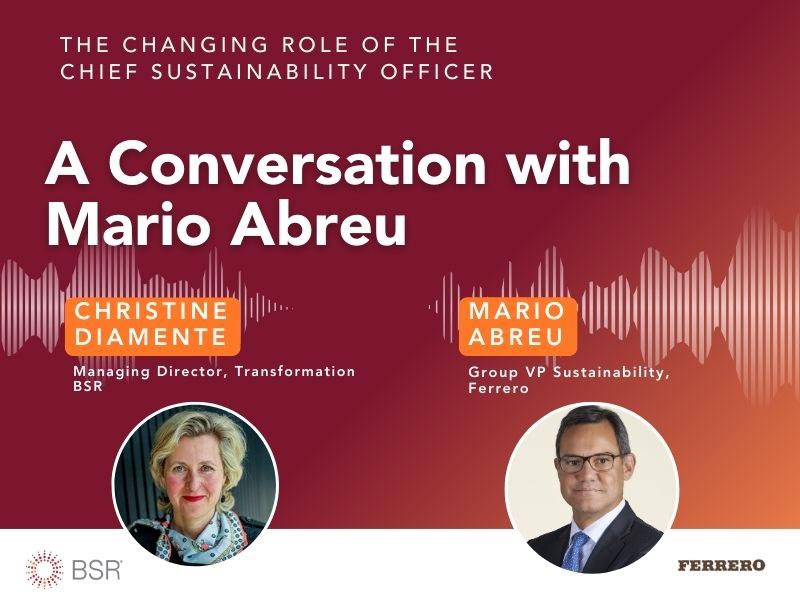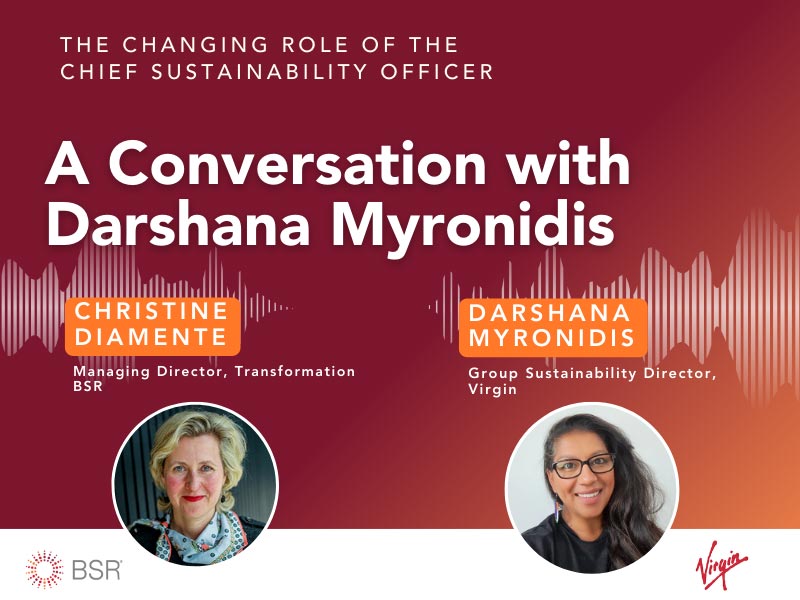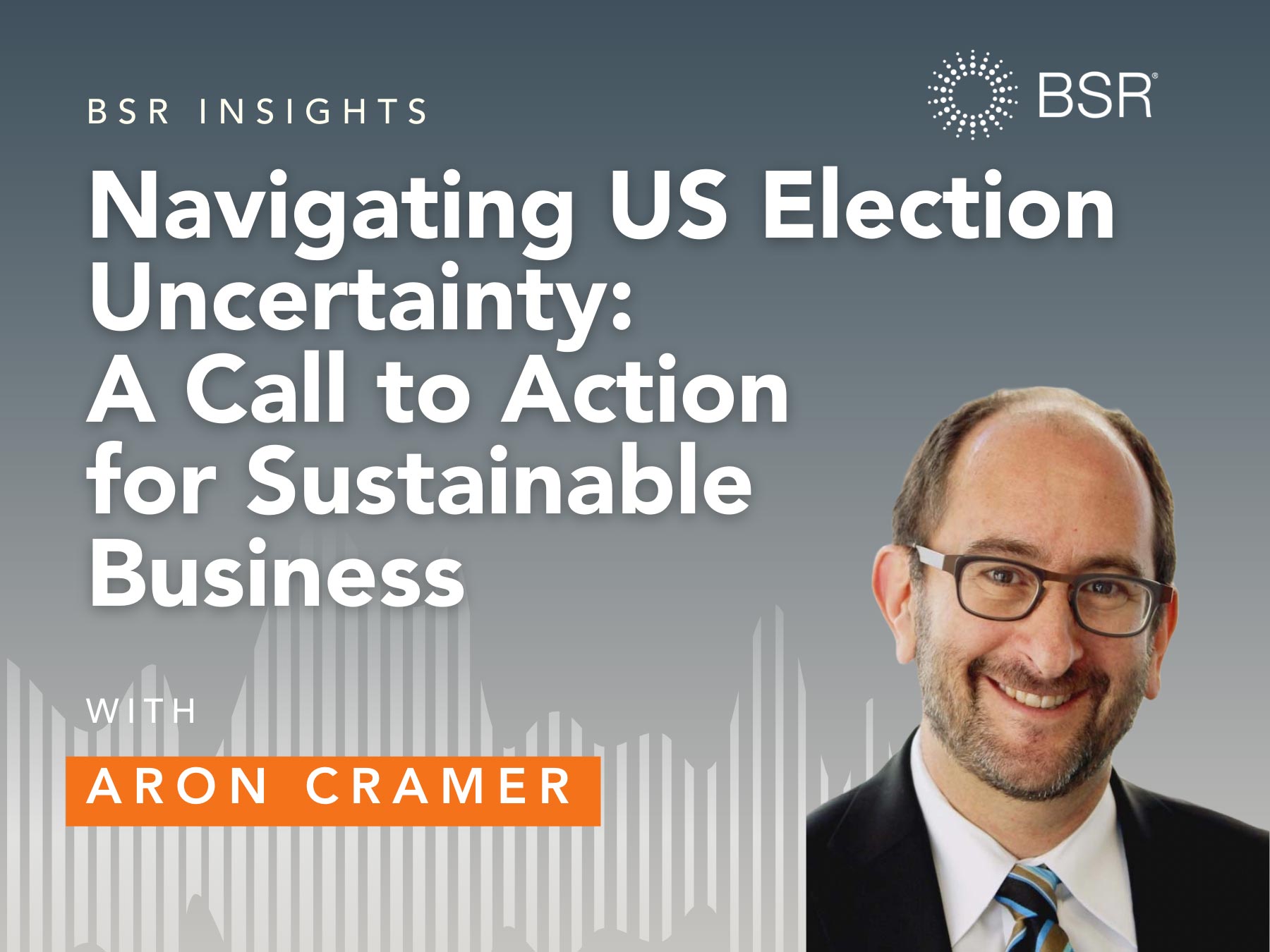
Authors
-
Hannah Ellis
Former Manager, BSR
-

Director, Technology Sectors, BSR
-

Associate Director, Technology Sectors, BSR
We are experiencing a profound shift in stakeholder expectations and business growth strategy: sustainability is more important than ever before. Younger, high-growth companies—those that either are privately held or recently went public—face unique challenges and opportunities as they expand business while also considering environmental, social, and governance (ESG) factors, be it climate change, privacy, diversity, or a range of other material issues.
Over the past two years, we have hosted quarterly convenings for high-growth companies to share challenges and approaches on a variety of ESG topics. In these meetings, BSR spoke with company sustainability leaders, who shared how their experiences might apply to younger businesses. Based on the outcomes of these discussions, what are the main considerations for a high-growth company at the start of its ESG journey?
First Up: Identify Material ESG Issues
Conducting a materiality assessment is an essential “do this first” step to jump-starting an ESG strategy. A materiality assessment is a widely used approach to help companies develop ESG priorities by understanding the most important topics. It identifies key areas of overlap between enterprise value creation (“impact inwards”) and impact on society and the environment (“impact outwards”).
Materiality can help a young company: 1) align on relative priorities and clarify the rationale; 2) enable better allocation of resources to address priority issues; and 3) communicate more effectively, internally and externally, on the most material issues.
We explore other key steps in a recent report published in collaboration with Morgan Stanley, which addresses why, when, and how high-growth companies can develop ESG strategies that support value generation and meet growing stakeholder (i.e. investor) expectations.
So, you’ve taken the initial recommended steps. What do you need to consider first among the ESG dynamics at play?
Environmental Issues
Acting on the climate crisis is more urgent than ever, no matter where a high-growth company is in their sustainability journey. While younger companies may have a smaller environmental impact than more established ones, they must not ignore issues such as climate change and energy use because extreme, systemic climate risks can be disruptive to the global economy and all businesses.
To develop a climate strategy that fits a company’s business model, scale, and stakeholder expectations, start by measuring the company’s greenhouse gas emissions footprint, which will provide a baseline to make informed decisions, commitments, investments, and operational changes moving forward. Once the company understands its footprint, it can then create a strategy to meet an ambitious climate action commitment, as exemplified by Atlassian’s Science-Based Target and net-zero goal and Okta's 100-percent renewable energy commitment.
Social Issues
The COVID-19 pandemic, ongoing social justice movements, and recent social media deplatforming events have put a spotlight on how companies need to address the “S” in corporate ESG issues—and younger companies whose workforces are rapidly growing cannot wait to act.
While studies continue to show that diverse and inclusive teams provide many business benefits, companies big and small still struggle with creating a workforce where employees enjoy equitable opportunities in a welcoming environment. BSR recommends that high-growth companies adopt equitable and inclusive practices early on, such as ensuring job descriptions don’t include gender-biased language and working with a third party to conduct an annual study to ensure pay equity. We also encourage companies to promote social justice by leading with equity.
Additionally, collaborative efforts with partners like the Tech Equity Collaborative, Alliance for Global Inclusion, and Partnership for Global LGBTI Equality are great ways for younger companies with smaller teams to work with others to help improve DEI practices and realize benefits at the company and industry-wide level.
Governance Issues
High-growth companies develop with such speed and scale that they often lack strategic approaches and governance structures for managing various ESG issues and are often not resourced with dedicated ESG staff. In turn, the management and communication of ESG efforts can be often an overwhelming task, leaving employees looking around and asking, “who’s responsible for what, and how does any of this get done?”
In establishing an ESG governance structure, first look at team members. Senior leadership support for and awareness of the business case for addressing material ESG issues is critical to gaining resources and realizing the benefits of action over time. Regardless of whether a dedicated Head of ESG position is an option or not, a cross-functional approach—in which senior leadership engages with various business units, be it human resources, investor relations, legal, sales, or product engineering—helps to ensure shared ownership and management of ESG issues that are often interconnected.
When it comes to communications, start with a featured section of the company website that transparently shares where the company is in its ESG journey. Then consider more robust reporting frameworks, such as the Global Reporting Initiative and the Value Reporting Foundation, to identify indicators to use when reporting annual progress on the company’s material ESG issues.
It is never too early (or too late) to embed ESG into a high-growth business model. Embracing ESG practices early has shown to improve valuation and ultimately long-term success. BSR continues to run our high growth webinar series both in the US and EMEA—if you want to participate, don’t hesitate to reach out.
Topics
Let’s talk about how BSR can help you to transform your business and achieve your sustainability goals.







